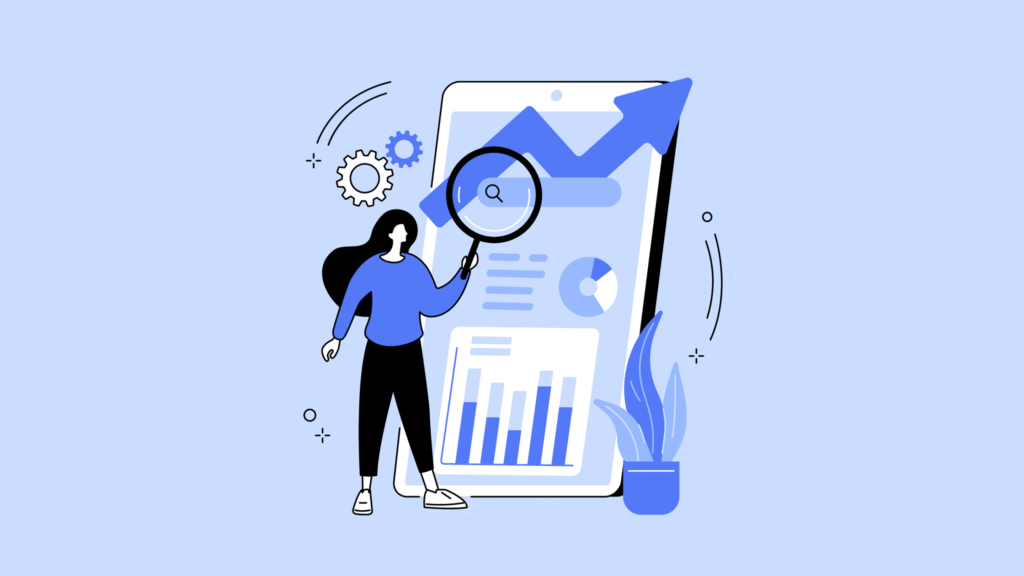On page search engine optimization or on-site SEO is a process of optimizing the elements on your website for both search engines and users. In other words, it refers to all the techniques and actions taken on your website to improve its ability to rank higher on search engine result pages. Some of the common tasks associated with on-page SEO are search intent, title tags, internal links, and URLs. By running successful on-page SEO campaigns in 2024, you can help users to improve both rankings and the user’s experience.
What are the most important on-page SEO elements in 2024?
As Google algorithms are constantly evolving, it has now become more difficult to improve a website’s ranking. To keep up with these changes and drive more organic traffic, you need to use the best of on-site SEO techniques combined with the right tools as the process can be really time consuming if you do everything manually. Before we talk about the tools that can help you to conduct on-page SEO, let’s talk about the elements that will help to boost your online presence and improves your rankings on search engine result pages.
Content
Content is the key element when you are working on the on-page SEO elements. SEO content is not limited to text. Following are the elements of the SEO content that should be optimized
- Text such as (articles, blogs, press release, website content)
- Media (images, videos, infographics, presentations, etc.)
- CTA buttons and links
- Supplementary content such as header menu, sidebars, and navigational buttons
Make sure to include keywords in the content in a natural way. You will also need to enough content on the page in text form for users and search engines. Read here tips for creating highly clickable content.
Title Tags
When searching for anything on Google, people get a lot of options as search results. However, they usually get the information they seek by clicking on the link with the most compelling title tag. Title tags are usually short (less than 70 characters) and provide relevant information about the content. As a general practice, title tag should include your target keyword and must be written in a compelling way, so that the user wants to click it. Title tags are the most critical Google ranking factors and are also a great starting point for on-page search engine optimization.
Meta Description
The meta description is a piece of HTML on each web page of a website that describes what page is all about. It is usually displayed right below the title tag in the search engine result pages. It is necessary to optimize the meta description to foster people to visit your website. Learn more about the best practices to optimize your meta tags.
H1 Tags
H1 tags are pieces of HTML code found on the website to indicate the website’s main topic, making it easier for humans as well as search engine bots to understand the purpose of the site. They also help to structure the headings and subheadings of a web page. Different levels of heading tags are used to segment content to enhance its clarity. These levels of heading tags, start from <H1> to <H6>.
URL
URL indicates the users and search engines what the content of the page is all about. A confusing URL could hinder your position in search engine results and drive users away. That’s why it is important to update page’s URL instead of using the automatically generated format. Though, URLS don’t have a huge impact on a website’s rankings, you can improve the overall user’s experience by optimizing URL.
Image Optimization
Images on a web page can also indicate the search engines what the page is about. Image optimization or image SEO involve a lot of things. Here are common considerations for image optimization:
- Describe your image appropriately in a plain language
- Optimize your alt attributes
- Choose an appropriate image dimensions and product angles
- Minimize the image size without losing clarity
- Choose the appropriate file type
- Optimize your thumbnails.
- Use image stamps.
- Use the appropriate content delivery networks (CDNs)
- Test your images.
Internal Linking
Internal linking is the process of hyperlinking pages on your website to provide more clarity and information on a topic to the users. Internal linking is an important aspect of on-page SEO as it sends readers to the other pages on your website, enabling them to stay longer on your site and thus indicating to the search engines that your website is helpful and valuable. Also, the more time people spend on your website, the more time search engine crawlers will have to crawl and index your site pages. This ultimately helps the search engines to grasp more information about your website and potential rank it higher on search engine e results.
Page Experience
Page experience is the combination of factors that measure the quality of the user experience of a website. Some of the factors affecting the page experience are as follows
- Mobile-friendliness: Your website should be optimally optimized for mobile devices
- HTTPS: HTTPs have been added as page experience signal in google ranking algorithms and they have a substantial impact on the rankings.
- No intrusive interstitial: The word, “interstitial” means “to be between things”. In on page SEO, interstitials are pages that get between a user and the content they’re interested in. Such page can appear on desktop or appear as mobile interstitials. Google has introduced no intrusive interstitials update was designed to manage popup use.
- Core web vitals: Google announced new core web vitals that must be considered while measuring the page experience of a website. Core web vitals primarily consider how quickly a website loads, how interactive it is, and how stable the visuals are in real life.
Usability
Website usability can be defined as a measure of the effectiveness and satisfaction experienced by human while using a website. To know if your website is usable, consider the following
- Adherence to WCAG standards
- Ensuring mobile friendliness
- Navigation simplicity
- Content clarity
- Mobile experience
- Design
A web page can’t appear in search engine results if it is blocked from being crawled and indexed. Before moving on to on page SEO process, it is recommended to look out for the following issues
- Make sure your page doesn’t have the no-index tag.
- Your pages aren’t blocked by robots.txt.
- Your page doesn’t have a canonical tag pointing to another page.
One of the easiest ways to check whether your website pages are indexed is by typing “site: yourdomain.com” into the Google search box. This technique gives you a solid understanding of which pages are indexed on your website.
Now you are familiar with on-page SEO, you can now evaluate your website’s performance. You can either use a tool to audit your site, or you can look at each web page manually. If you are checking your site manually, you can use the following criteria as a basis for on-page optimization.
- Are you using keywords for every page? Are these keywords been delivering results? If not, what keywords should be used or what strategy should be implemented to target them.
- Are your pages linked to each other internally?
- Does your site load quickly?
- Does your site have fresh content? Is your content relevant to the latest information?
How to evaluate your website for on-page optimization using ESL Ranks Pro?
The ESL Ranks Pro is a solid SEO tool that can be used to scan the HTML of a website and uncovers important on-page elements required to be optimized to improve your rankings.
If you are conducting on-page SEO of a website to increase its rankings, it is recommended to begin by knowing your website’s health score and spotting critical on-page SEO issues with ESL site audit tool.
The ESL Site Audit tool helps to identify all the issues affecting your site and how your website is scoring in terms of SEO factors. It collates data on your site’s organic search performance in a graphical and segmented form. This puts you in complete control of all the data points of each page of your website. The tool crawls all the pages of your site, fetches entire SEO related issues and your performance score according to SERP.
Run an SEO audit using ESL Ranks Pro to identify your website’s status on a page-by-page basis. It allows you to view all the site audit metrics in one dashboard, with segmented graphical form. It further helps to get a better grasp and insight about your site’s technical SEO health.
On-Page SEO Score

The on-page SEO score is an SEO metric that measures how well a website is optimized for search engines. A good SEO score is usually considered between 80 and 100. If your website has a good On-page score, this is the indicator that your website meets the high-quality standards for technical SEO, content, UX, and mobile usability. On the other hand, if your on-page SEO score is lower than 80, you need to strengthen your on-page SEO strategy and fix up the issues.
Organic Monthly Traffic
Organic monthly traffic is the number of website visitors that comes from unpaid search engine results. The better the organic traffic, the better will be the search engine rankings and visibility of a website. If you want to improve organic monthly traffic, it is recommended to use SEO tactics like searching keywords, optimizing pages, and writing good content
Organic Keywords

Organic keywords are the cornerstone of an effective SEO strategy. They are used in SEO to garner organic traffic. Organic keywords should be used in title tags and meta tag optimization to improvise its search results.
Backlinks

The more is the number of high-quality backlinks to your site, the more will be your chances to score higher on search engine result pages. Backlinks are off page SEO factor that should be considered in conjunction with on-page SEO factors to create a solid SEO strategy for a website.
Page Status

ESL Ranks Pro helps you get a complete overview of total crawled pages and as well as their status such as:
- Successful
- Redirected
- Broken
- Blocked
- Site speed
Page Load Time

The load time of site, visual stability and interactivity of the site page affects the user experience and the ranking of a website. ESL Ranks pro provides the following information with respect to the page load time
- Desktop load time
- Desktop interactivity
- Desktop visual stability
Duplicate Meta Descriptions

When there are duplicate meta description, it can be harmful to the SEO of your website. Although, your website won’t get penalised, but you may also not expect one page to rank better when both pages have the same meta description.
Duplicate Title Tags

Title tag refers to the tag that appears in the HTML code of a page and it is shown as the title of the web page in the search engines. When two or more web pages on a site have the same title tag, it is regarded as duplicate title tag. If several pages have the same title tag, it confuses search engine crawlers about which page is most relevant and valuable for a particular query and may lead your site to rank lower or in extreme cases your website may get removed from search results altogether.
Low Word Count

As per report by HubSpot, it was found that ideal blog post length should be 2,100-2,400 words. As per other stats provided by backlinko, 1000 – 2,000 words was considered the optimal word count for attracting social shares, while articles 3,000 words or longer won the most backlinks. As a low word count can impact ranking, ESL Rank Pro shows the pages with low word count, so you can take right actions to fix it. However, keep it in mind, it is not just the length but the intent of the content that matters the most to score higher on search engine results.
Page URL
ESL Ranks Pro also displays the shortcomings in your page URL such as Poorly formatted URL or URLs are too long. When the page URL is clear and concise, it reflects that page content is relevant and easy to understand for users and search engines, which potentially influence click through rate and indirectly affect ranking of your site. ESL Ranks Pro displays many other such significant on-page SEO issues that can help you to evaluate if your website has been optimised or not.
What on-page SEO strategies can you use to improve your rankings?
A search engine friendly website has a high probability of ranking high in the SERPs. Once you understand and identify the on-page SEO elements that are needed to be fixed, the next step is to take the right action to fix them. Here are some of the practices that can help to optimize your web page.
User Intent
User intent plays a crucial role in affecting the ranking of your site. It refers to the main goal for which a user has typed a query in the search engine. It is important for SEO expert or the one who is conducting SEO or even writing the content to understand the user intent. One must think about intent when beginning keyword research as well as when fixing on page optimization issues. Having the right tool can help you with intent based keyword research to get the best results. When building your meta data and website content, it is important to consider that on-page SEO strategy is much about getting targeted audience or customers what they need as it is about improving the ranking of your site.
Mobile Friendliness
Mobile SEO is essential to increase your ranking as well as to leap ahead in a competitive digital landscape. Make sure your website looks good and functions well on phones as well as desktop and is not strictly designed for one or the other. If your website design is responsive, it will be showing up higher in search engine results than those that are less mobile-friendly. For ensuring the mobile friendliness of a website, one needs to work on various aspects such as easy navigation, easy to use, fast and has relevant and optimized content.
Securing your Site
Site security such as an HTTPs protocol is essential to enhance the credibility of your site in the eyes of search engines as well as users. Many websites still function without the proper security. Google has included site security in its ranking algorithm to push web towards more secure websites and hence, it has become one of the most crucial elements.
Content Comprehensiveness
Content comprehensiveness is an important aspect of on page search engine optimization. Google has emphasized the need of using harmful content on your website to increase its chances of ranking higher on search engine result pages. One must consider writing unique, super valuable, helpful content optimized for search intent. The use of detailed information, images, updated material and EAT principles can help you to craft a content SEO strategy to improve your on-page and off page SEO results.
Improving UX
There are certain factors that help to improve the user experience that must be considered for strengthening the on-page SEO of a website. These factors include site structure, intuitive navigation, site-speed, and design. Web developers should pay attention to these on-page elements for improving the user’s experience. It is important to think of the ways to improve your web design to help user better experience the main content of each web page.
In short, one must keep in mind the following factors while conduction on-page search engine optimization:
- Make sure your keyword is in your URL
- Optimize your page title
- Use headers
- Include keywords in your content
- Incorporate images, graphics, and other visuals
- Add meta description
- Optimize visuals with alt-text
- Add internal links
- Add external links
Conclusion
On-page SEO is optimizing the elements within your website for users as well as search engines. It involves taking into consideration elements like titles, keywords, content, and structure help search engines understand your site and rank it higher. Site audit tools are like ESL Ranks Pro scan your site for weak spots like broken links or duplicate title tags or others, so you can take the appropriate actions to fix them and boost your site’s performance and outrun the competition in search results.



